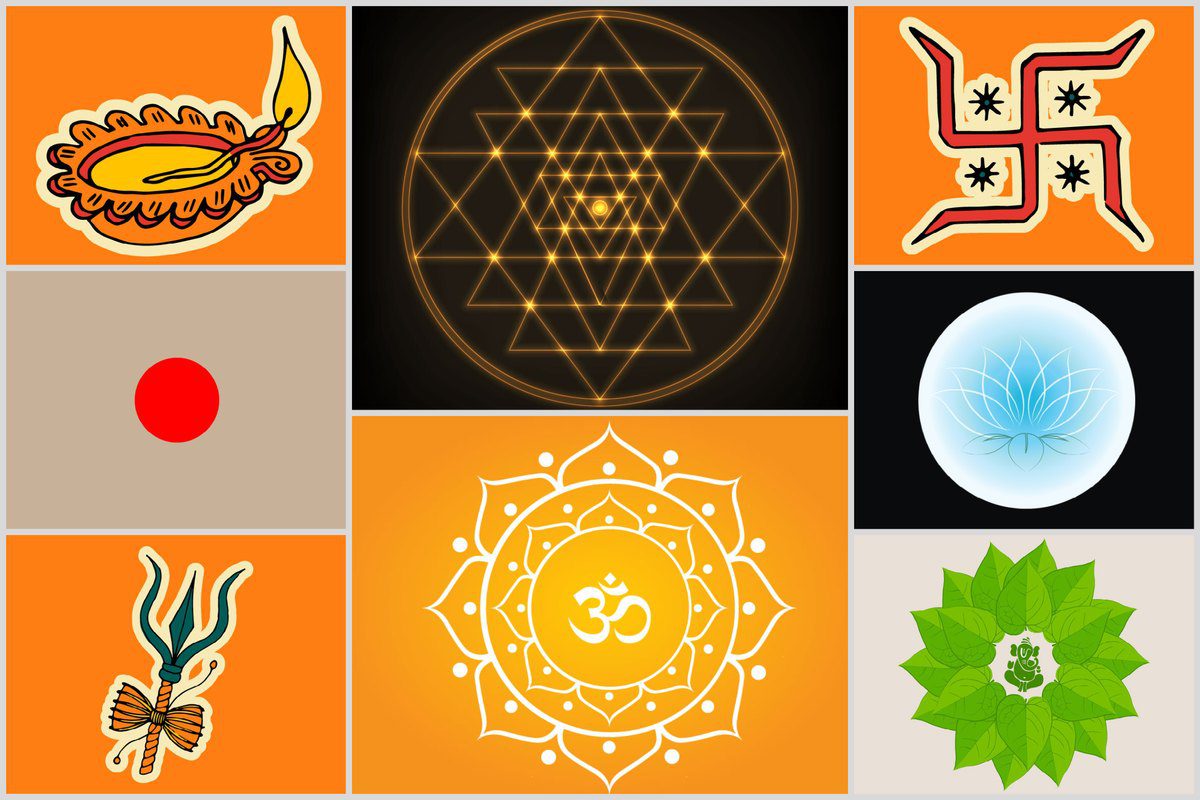Hinduism is full of symbolism—arguably no other religion employs the art of symbolism as effectively as the Hindus. Most of these symbols are representative of the philosophies, teachings, omen, and even the gods and goddesses.
In Hinduism, symbols play a major ritual in social life, culture, and rituals. Hinduism is full of powerful theories and philosophies which find similarity with the modern science. Over time many concepts of Hinduism are gaining credibility among modern scientists.
Let us look at major symbols of Hinduism and their deep meaning they convey.
1. Aum
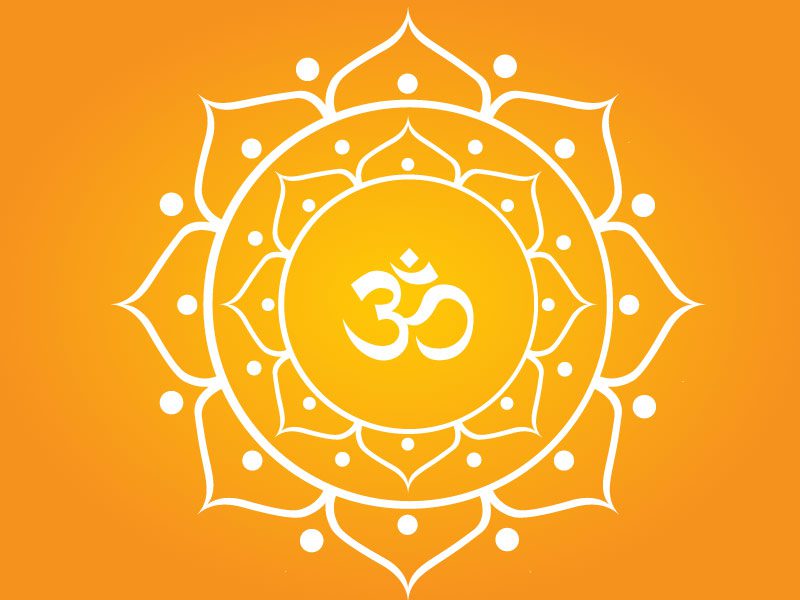
The Aum (Om)) is the most important spiritual Hindu symbol and its sound is used in meditation. In Hinduism, the word “Om” is the first syllable in any prayer.
More specifically, Om is used to signifying the universe and the ultimate reality. Some people say that this symbol represents the three aspects of God: the Brahma (A), the Vishny (U), and the Shiva (M).
Om is a foundation of Hinduism, where it is considered the very first sound of the universe. “Before the sound Om, there was nothing.” It is sometimes wrongly pronounced as ‘Om.’ The correct pronunciation however is ‘Aum’. The ‘A’ here represents creation, ‘U’ is manifestation, and ‘M’ is destruction.
“aitādhye vākshram Braham, aitādhye vakshram param.”
“AUM is Braham; Whoever knows this reality hidden behind the sound AUM, obtains whatever he desires. Thus nadbrahm became the first symbolic God.” — Kathopanishad
2. Lotus

The lotus is a very important symbol of Indian cultural heritage. Hindu scriptures are full of praises of the lotus because it is very sacred to all the Gods.
He who acts abandoning attachment, dedicating the deeds to Braham, is untainted by sin as a lotus leaf by water
God Brahma and Buddha are both shown sitting on a lotus. The Sun is also like a red lotus rising from the blue ocean/sky. Lord Vishnu holds a lotus in one of His left hands. Goddess Lakshmi also holds a lotus, presumably because both were obtained from the ocean churning.
It is a water-borne flower, yet not even a drop of water stays on the lotus or its leaf, so it is regarded as the most appropriate symbol of detachment from surroundings.
3. Tilak, Dot, Bindu
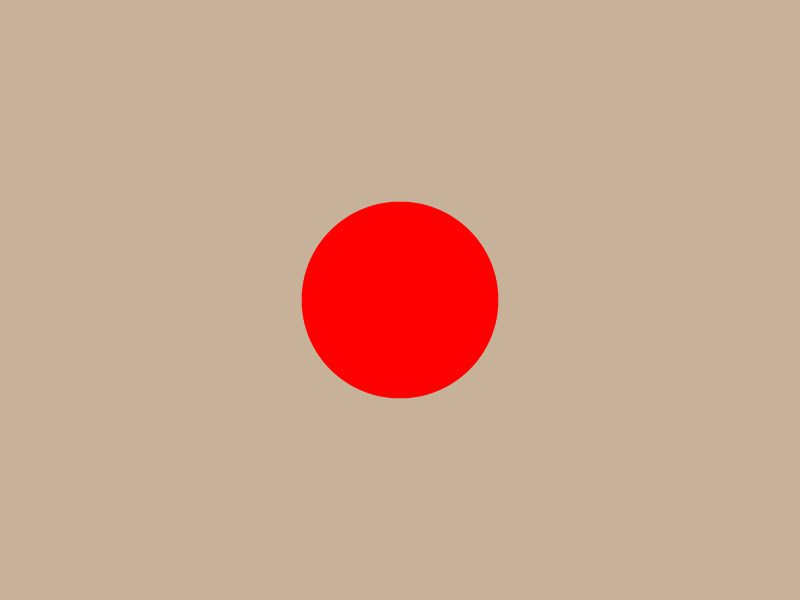
Our ancient human ancestors saw the shape and form of their own body on earth and he also saw the burning ball-like shape of the Sun in the sky.
This was his first acquaintance with shape. Then, they also saw the clouds assuming random shapes and dimensions so they start to give shapes and forms to their own ideas and thoughts and realized that the starting point of all shapes and forms is a point.
Geometry recognizes the point as a shape without dimensions which, though it cannot be described, still exists. Every drawn line is a string of points so he conceived a starting point to describe his thoughts, visions, and emotions and to express them with the help of his own sound.
Thus, sound and point became intertwined. A dot or point is the seed of language expressed by sound so it was the finale of the highest attainment.
bijakshram param bindum nadam tasyo paristhitam sa shabde sakshre kshine ni: shabdam paramam. Shiva Shakti Niketanam Vishnu Shakti Niketanam.
A dot or point is the abode of Shiva-Shakti, Vishnu- Lakshmi-Shakti. Every person belonging to any society or civilization had an indomitable will and urge to communicate his thoughts, emotions, and experiences to indicate their distinct identity, so symbols were developed.
The universe in the Big bang theory also began with a point or dot where no principles of mathematics and physics were applicable and it expanded into a universe as we know today from that nothingness to all the universe we see now.
4. Swastik – The Hinduism Symbols and its meaning
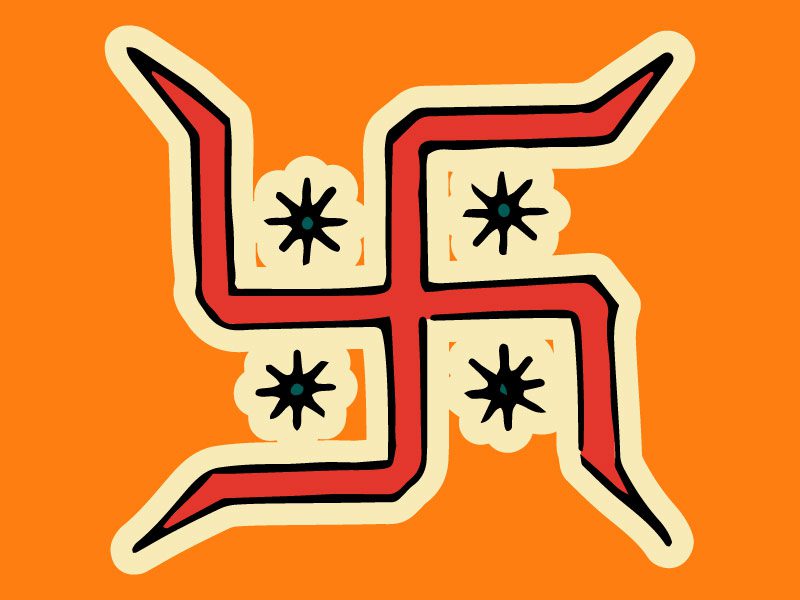
“swastina indro vradhashrva, swastina poosha vishva vedha: swastinastakshryo arishthanemi, swastino brahaspatir dadhatu:”
Meaning: May God Indra be benevolent and kind to us: Poosha Deva — God of intelligence be pleased and be benevolent to us; Bhagwan Garud whose arms and weapons are invincible, protect us from all ills; and Bhagwan Brahaspati (Guru of all gods) protect us from all odds.
Thus in this Mantra, the word ‘Swastik’ is repeated four times to ensure all blessings
For success in every undertaking human beings pray to God by invoking hymns, singing praise, recitations, etc. The Rishis had determined a shape as a symbol to propitiate cherished desire. The root of Swastik is su + us su means benefic and us means existence; whosoever desires to have glory, prosperity, progress, success, etc. is advised to invoke the Swastik Yantra.The swastika is also one the most recognized Hindu Symbol outside India. This however has to do with its infamous association with Nazi Germany symbol.
You can read more about it : Swastika: How a Sacred Symbol Became a Nazi Symbol of Hate
5. Shree Chakra or Shree Yantra

Sri Yantra – symbol of formed by nine interlocking triangles that radiate out from the central point.
The Garbh-Grah — sanctum sanctorum, of Lord Venkateshwara’s temple in India, has a highly powerful Shreeyantra beneath the foundation, so this temple has become a wish-fulfilling holy place for real devotees. It is the richest temple in India.
It is claimed that a Shree Yantra made with five precious metal alloys in the prescribed composition as laid down by the Rishis and sanctified by a Siddha saint, acquires undisputable potency of bestowing riches on the devotee for several years as per the potency infused in it.
Sir John Woodruff and Dr. N.J. Button of U.K., and Dr. Zejerta of Germany have undertaken a deep study and research on the scientific construction and celestial effects of Shree Yantra. In Russia, Dr. Alexi Kulaicheva has attempted to analyse and study the formation of Shree Chakra or Shree Yantra on a computer to establish its precision and accuracy.
Scientists in China, Japan, and the spiritual heads of Tibet and Nepal have studied Shree Yantra and its cosmic effects with proper propitiation as prescribed by the Rishis.
The Tantriks developed certain well defined geo-mechanical devices encompassed in a wheel, representing the cosmos, saying that the whole universe is bound in a circle.
They divide the universe into a triangle with an apex on top representing Sat-Chit-Anand, or Fire, Shiva and Male. They also drew triangles with a downward apex to represent Water, Energy, and Nature.
A combination of both such triangles, crossing the arms of each other represents Creation- Preservation-Destruction. The center point of both triangles remains unchanged representing Braham — The great Source of all creations. Jagat Guru Adi Shankaracharya has given a vivid description of Shree Yantra in his book Sondarya Lahari.
To propitiate Goddess Lakshmi, there are two independent collections, Shree Sukta and Lakshmi Sukta. It is said that Shree-Sukta has been written in coded language. In fact, it gives details of a chemical formula, following which gold can be made with a specified mixture and a combination of juices of certain herbs, available in India.
Those who worship a Shree Yantra are advised not to use saffron in their puja-offerings. The best and recommended offering for puja or worship is some vermilion and a natural fragrance called Itra in India. A Shree Yantra should not be worshipped or disturbed at night.
6. Rudraksha
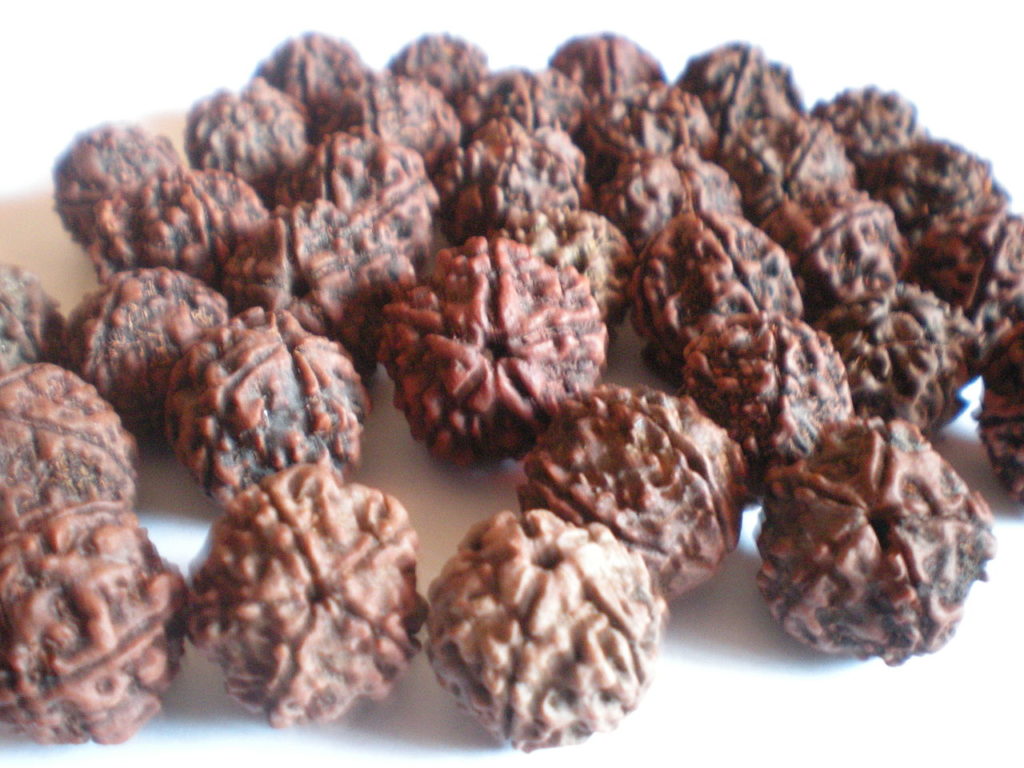
Rudraksha is the seed (stone) of a fruit of a rare species of a tree found in Nepal, Java, Sumatra and Malaya. In India, it has been found in Haridwar and spotted at some centers in Konkan and Karnataka. It is roundish with a cellular demarcation and has a central bore. Small or unripe, unmatured seeds are of no value.
Rarely, a seed with no bore is also seen but then it becomes a piece of great sanctity value if it has only 1 cell mark. The cellular mark/division varies from 1 to 21 per seed.
The Rishis observed these peculiarities and made detailed investigations because they noticed that every seed is a ball of energy but the efficacy quantum differed from piece to piece with different cellular markings but there was no difference in any two identical seeds.
Rudraksha holds a place of pride in the Rigveda, Atharvaveda, Skand Puran, and other scriptures because of their beneficial properties of attracting healthy vibrations. Saints wear it as a necklace; the Rishis had deified it as an ornament of Lord Shiva.
Because of its varying energy potential, rare availability, and sanctity as accorded by the Rishis, they are very much in demand by believers; people are willing to pay any price for a one-cell Rudraksha without a bore. The most common and easily available variety is the 5 cell mark.
Checking the purity of Rudraksha
A real Rudraksha is solid in construction hence it sinks in a bowl filled with water. A fake piece will float. There are many other scientific tests to determine its purity/efficacy, and aroma. Its aromatic property helps a devotee to go into deep meditation faster.
It must be remembered that the Rudraksha must not rub against itself or even with the fingers of a devotee so its use in a rosary is forbidden because rubbing/ friction can erode its potentiality and charm property.
It can be worn on the neck threaded with gold/silver wire or in a silk or woolen thread so that it remains in gentle touch with the body to boost immunity. Just as a doctor uses a stethoscope to examine a patient, enlightened saints use a Rudraksha to read the personality and fortune of a disciple.
It determines positive or negative energy currents flowing in the body of every person, at any time. The blood pressure of the wearer becomes normal. Its energy charges help and strengthen the heart, reduces tension as per Hindu scholars but concrete scientific proof is still wanted.
Rudraksha as per Ayurveda
According to Ayurveda, it is said to be sour and hot. It quenches thirst if, milk with a minute quantity of its paste is mixed and drank.
Sages advise to put one or two seeds in a silver or copper pot or water jug and sip that water whenever thirsty to keep blood pressure under control.
A single seed retains the efficacy for about one month. Lightening does not strike the wearer; protects him from accidents; and bestows good luck.
Persons with positive energy currents should wear it on the right hand; those with negative currents on the left hand, for better results: Persons wearing Rudraksha are held in high esteem.
7. Sacred Thread: Symbol and its meaning in Hinduism
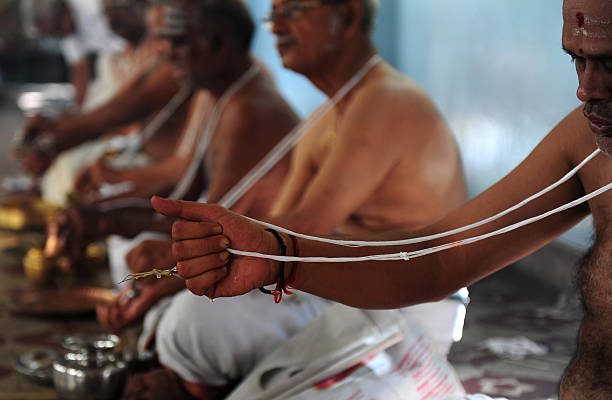
A thick tuft of hairs on the head, a rosary in hand, a prominent Tilak or Tripund on the forehead and a sacred thread across the torso are the accepted symbols of being a holy man by the Hindus.
To encourage cooperation and establish order in society, Hindus had divided the life span of every person into four distinct divisions — Brahmacharya — the celebate life of a student; Grihasta — family life; Vanprastha — the third portion of life when a person should detach himself from family bonds and endeavour to serve the society; and Sanyasa — when a person should finally renounce the world. In this final stage, the person ceases to belong to his family, caste, or creed. Instead, he devotes himself to spread the message of the scriptures of love and benevolence and simultaneously practices Yogic Sadhna to illuminate his own self to attain salvation.
There is no sanction for leading an idle life and becoming a burden on society or to look to pass life in an old-age-home run with the help of others. To make life simpler and enjoyable, Lord Shree Krishna preached secularism, saying, “I have divided mankind in four stages (Ashrams) as per their competence/capability and deeds (calling) or professions so, there is no need for any class conflict, or haves and have-nots in society.”
By birth, every child is a Shudra because they cannot clean themselves. As the child grows, it develops his/her talents. Just as a uniform is compulsory in good educational institutions, similarly, the child used to be initiated in a Gurukul (co-educational institution) run by some renowned Rishis and at that time, a sacred thread ceremony used to be performed by the Guru to denote that the boy or girl is now reborn and adopted in an intellectual society.
After completing his educational career, the Brahmachari was free to join the ancestral family business and excel in it or if his talents dictated any other career, surtech-over after proving himself worthy of it. Thus, every young person had a birthright to progress in his family business without any apprehension of discrimination; and for diversion, he had to prove his worth. Exceptions to good rules exist everywhere; the intervening dark age period aggravated the situation and misunderstandings cropped up, giving room to class struggles for existence and survival. There was no caste system initially; the classification would be based on the reputation of the Gurukul and the reputation of the Rishi running it: The nature and requirements of other professions began the class/ calling.
The Rishis did not propagate mass education because ordinarily every human being has a limited intelligence/ competence/capability for excellence: Only a born genius or a person gifted with dexterity and zeal could rise above contemporaries by virtue of his/her excellence and for such persons, the sky was the limit for attaining Moksh (salvation). Thus, the Rishis offered an equal opportunity to all students and disciples to prove their merit without caste considerations or family.
A sacred thread consists of hand-spun yarn of specific length: Three equal lengths of the yarn are twisted together to make one standard length. Thus, three twisted yarn lengths are tied together and after a well defined sacred thread ceremony, the student used to be initiated, to give him a sacred status.
The student was advised to wear the sacred thread like a cross belt on his body. The three twisted threads represented the Trinity of Gods; or three virtues of life — Satogun (pious living), Rajogun (imperious living), and Tamogun (vicious living).
The 3×3 also represented Navagrah — nine planets recognized by astrology; as also the nine outlets of every human being — one mouth, two nostrils, two eyes, two ears, one genital organ, and the anus, The rishis vested the disciple with a sacred thread in order that he should constantly remember having taken a vow to keep under check and control, these nine outlets for a healthy, long life.
The wearer of the sacred thread becomes a leader because every thread blesses the wearer with increased longevity: All the threads are bright white so they add to the person’s aura and moral strength. There can be no dispute in acquiring knowledge by deeds and single-minded efforts.
Zoroastrians also wear a sacred thread as a belt around their lumber region. Wearing a belt is recommended by medical science too, to keep the lumber region vertebras in position and in proper alignment, hence the military, police, security guards, and others have adopted this practice.
However, the Rishis did not recommend wearing it around the back in order to retain its purity and sacredness as the lumbar region is considered to be unhygienic. Additionally, the wearer was told to use it for tying around the ear while attending to nature’s calls. Rishi Sushrut and Rishi Charak recommended this practice as a health need to keep the veins of the ears and nose in an alert position, and the Dhoti (Loin cloth) around the back to keep the lumber region in good shape/alignment. This is better expressed and explained in acupressure therapy.
8. Deepak Jyoti Flame
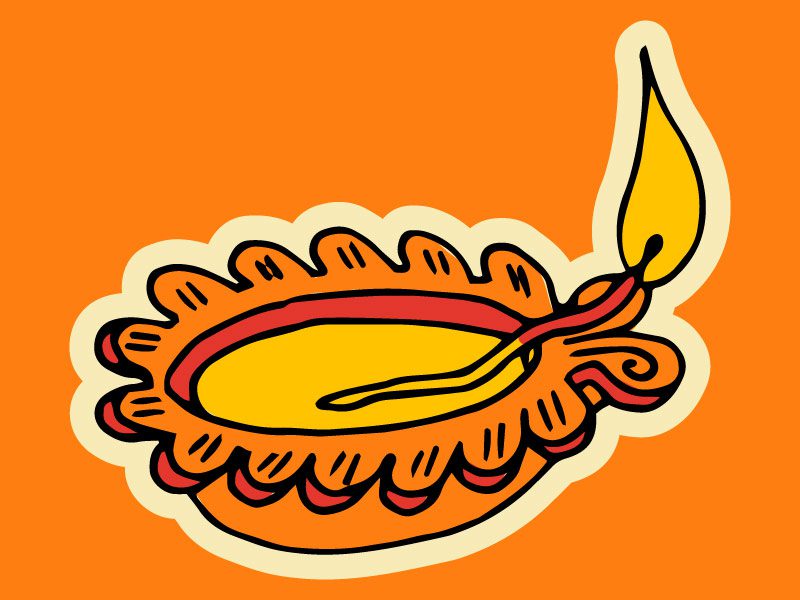
Skand Purān says, “fire burns up everything, whereas a lamp, and a candle destroy darkness and spreads light.”
Oh lamp, I bow to thee; You are supreme God and Shree Krishna; you burn up our sins, 1 bow to thee
“Lead me Oh! kindly light (flame), lead me from darkness to light! No person feels happy with living in darkness. The Rishis always worshiped ‘Jyoti’ (flame) as being the purest of the pure because it consumes all impurities, yet it remains pure.
They worshipped fire, the lightning in the clouds, God Sun, Moon, and also the twinkling stars emitting dim light to remove the darkness.
The electric bulb cannot light up another bulb so the bulb is not worshipped but a Deepak (lamp or a candle) takes pride in lighting up another Deepak, even at the cost of burning out itself.
The Sun and Moon do give light but they are up above in the sky; they are constantly moving away, whereas the fire/flame remains on earth as the eternal companion of mankind.
You May Also Like: 25 Interesting Lesser Known Facts From The Ramayana That You Should Know About
9. Conch Shell- Shankh: Hinduism Symbols and their meaning
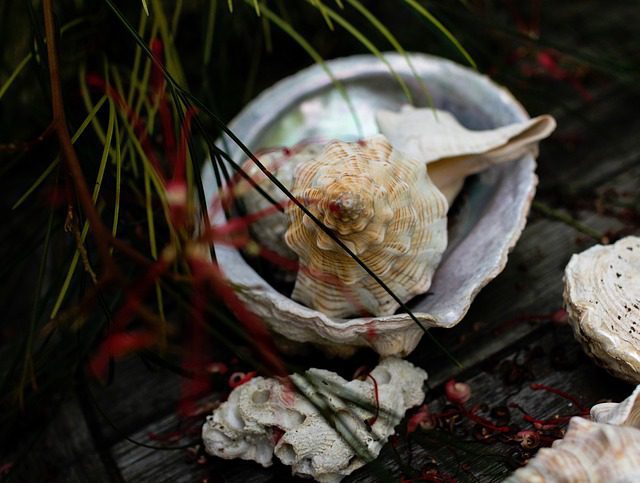
The shankh was obtained as a gift from the great ocean- churning. The spiral formation inside the conch-shell is symbolic of infinite space which gradually expands in clock-wise direction.
All natural conch shells yield cosmic sounds called Anahat Nād (pervading throughout the universe). Despite apparent total silence in the atmosphere, the cosmic sound remains vibrating. One can listen to this sound by holding the conch shell close to the ear, with the sharp tip outlet facing upward.
An attractive Shankh with its mouth on the right side was accepted by God Vishnu and another with a left-side opening adorns the hand of Goddess Lakshmi, hence both these special types are considered auspicious. The blowing of a Shankh heralds every important event and auspicious celebration to call the faithfuls at the beginning of worship of the deity.
On the battlefield of Kuru Kshetra in the Mahabharat every morning, the start of warfare was signaled by the blowing of the Shankh and again every evening, the war for that day would end with the blowing of the Shankh. Every great king and army-chief had his own particular Shankh.Some of the famous known Shankhs/ Conch Shell in Hinduism iconography are:
| Panchjanya | This Shankh is associated with Lord Krishna who uses it |
| Devadatta | Arjun uses Devadatta Shankh Mahabharata |
| Maha Shankh | Bhima uses Maha Shankh during Mahabharata |
| Anant Vijay | Yudhishthir uses Anant Vijay Shankh |
| Mani Pushpa | Shahdeva Uses Pushpa |
| Sughosh | Nakula uses Sughosh Shankh |
| Poundra | Vrikodar uses Poundra Shankh |
10. Betel Leaf

Preservation and propagation of flora and fauna were an essential activity of life in ancient India.
In the Skand Puran, it is written that the betel leaf was obtained by the ocean churning. The Mahabharat narrates that after their victory, the Pandavas decided to perform Rajsuya Yagnya.
The performing sages asked for betel leaves to start the preparations but alas, the leaves were not available, so Arjun was advised to go to Nag-Lok, the kingdom of snakes, in order to procure them. Arjun approached the Vasuki Nag queen to oblige.
The queen was pleased with Arjun’s appeal, cut a phalange of her little finger, gave it to Arjun and advised him to sow the phalange from which a creeper would grow and sprout many leaves.
Since the seed of this creeper was a human phalange, this creeper is not blessed with any kind of flower or fruit. Thus, the paan creeper was obtained from the snake queen Vasuki and it is called Nag-Valli or Nagarbel.
You May Also Like: What happened after the after the Mahabharata war? Interesting facts
11. The Trishula
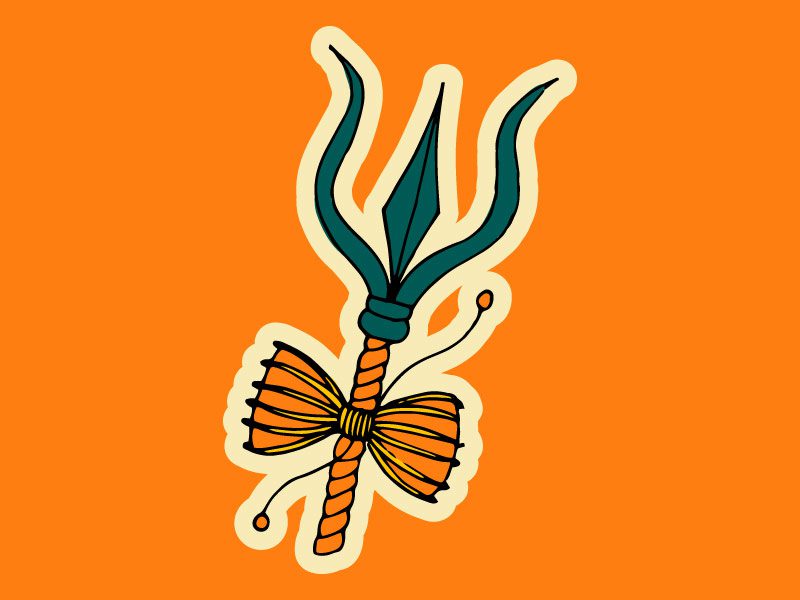
Trishula or the Trident is a well known Hindu symbol that is associated with Lord Shiva. Though this three-pronged symbol is usually seen as a weapon used by the Lord Shiva for the protection and restoration of Dharma, it actually carries deeper meanings.
It symbolizes of the Trinity of god in Hinduism namely, Brahma, Vishnu and Mahesh and stands for the balance between the forces of creation, preservation and destruction. It is also considered symbolic of the three Gunas – Rajas, Tamas and Sattva.
Another symbolic representation of the Trishula is that of the three facets of consciousness, namely, cognition, affection and conation.
12. Tulsi and its meaning in Hinduism
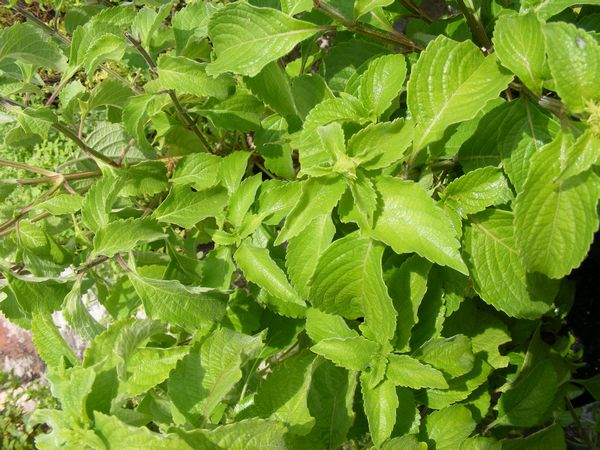
Meaning: Wherever Tulsi is planted, in grooves or in house-holds, that place becomes sanctified as a place of pilgrimage and the sepoys of the LORD of DEATH—Yamdoots dare not enter that place.tulsi kananam chaiva grahe yasyavatishthate tad grham teerth bhoot hi jayante yama kinkara.
Lord Vishnu is perpetually shown associated with the Goddess Lakshmi and Tulsi, hence Tulsi is worshipped by all. In India, it is regarded as the most sacred plant. It is an erect bushy plant of about 4 ft. height.
Its leaves are aromatic and are dotted with minute glands; the flowers are purplish, in small clusters on slender spikes and the seeds are yellowish or reddish.
Two varieties — Shyam (blackish) and green are grown in houses, gardens, and temples. Scientists have declared that wherever Tulsi is grown in great numbers, that area becomes pollution-free. Even dried leaves retain their original properties.
The oil obtained from the leaves have the property of destroying bacteria and insects. The leaves have traces of mercury so the extract is now used as an ingredient to cure cancer in Ayurvedic medicines.
The juice or infusion of the leaves is very useful in curing bronchitis, catarrh and digestive complaints: Its paste is a sure cure for ring-worm if applied regularly as also for many other skin diseases: Drops of its juice cure ear-aches, its decoction cures common cold and the seeds are useful in urinary problems: It also relieves malarial fever.
Thick branches of Tulsi, are dried, and cut into beads of equal shape/size to make rosary beads for devotees; Malas or necklaces are also prepared with beads, and devotees wear these with faith.
The Rishis had ordained that if a ghee-lamp or incence sticks or even flowers are not available for performing Puja or worship Tulsi leaves can be offered to the deity: This explains the importance and value of Tulsi, which is even otherwise, a MUST for every solemn puja or celebration.
